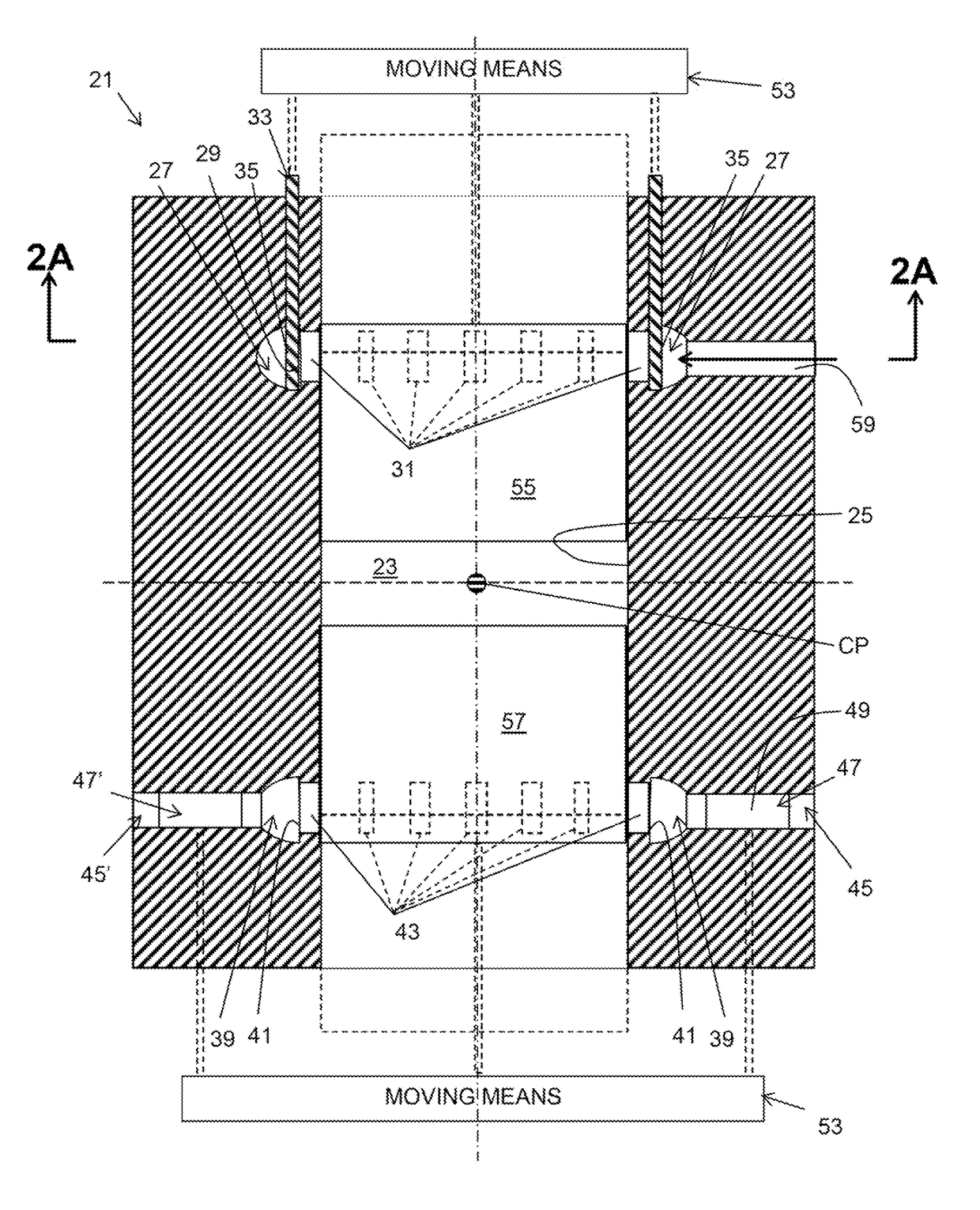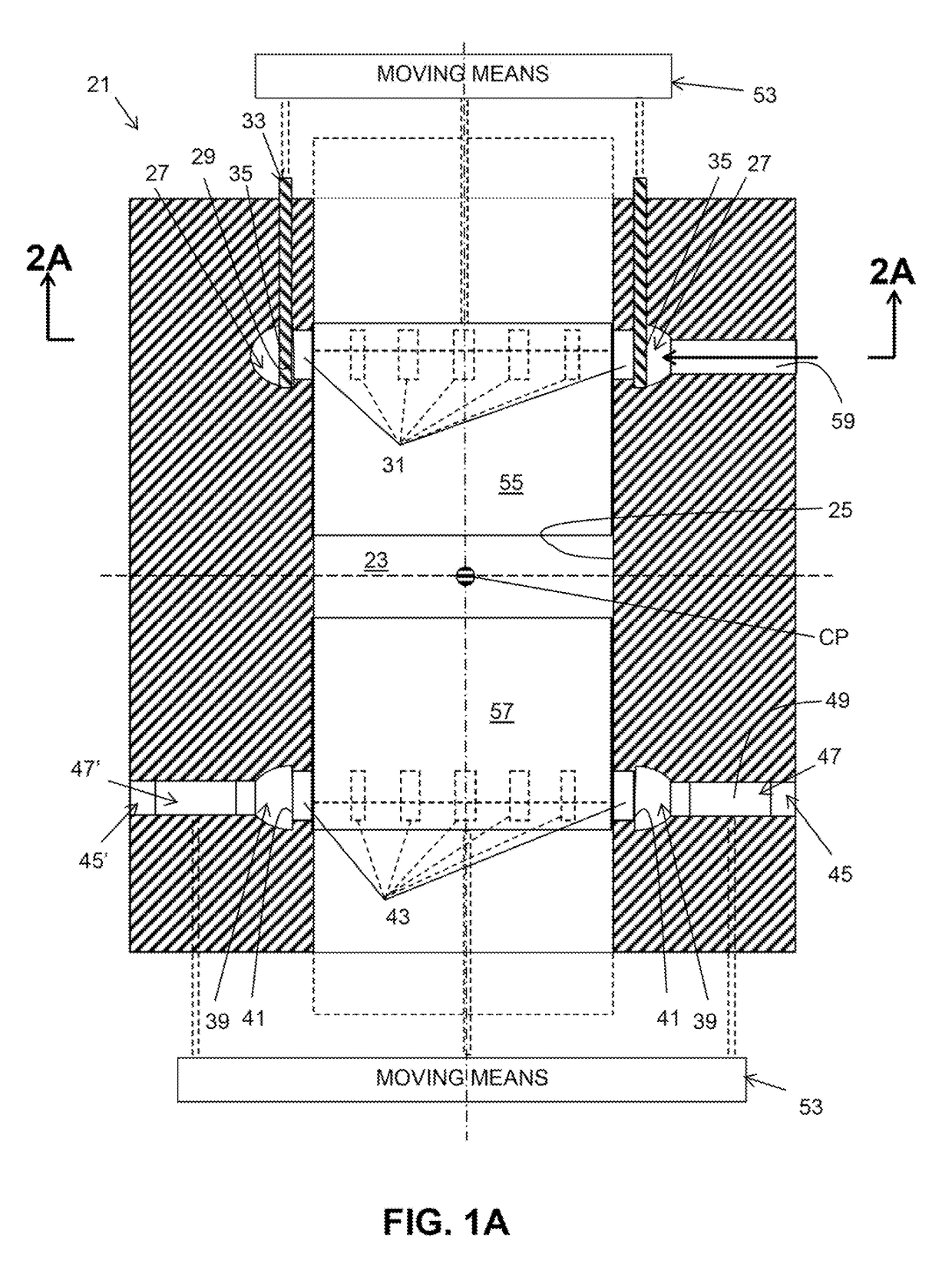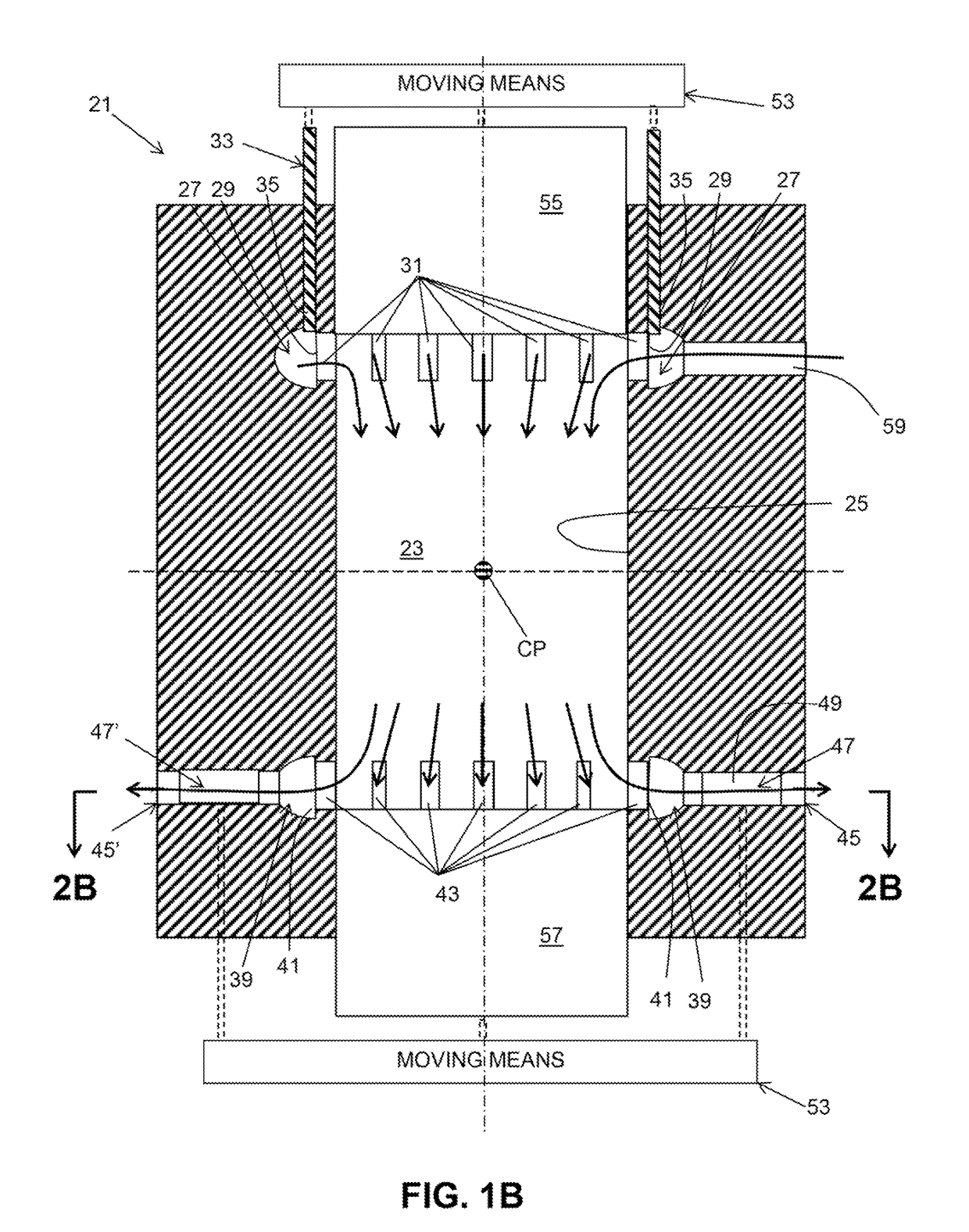Uniflow engine with intake and/or exhaust valves
- Summary
- Abstract
- Description
- Claims
- Application Information
AI Technical Summary
Benefits of technology
Problems solved by technology
Method used
Image
Examples
Embodiment Construction
[0024]FIGS. 1A-2C show a uniflow engine 21 according to, an aspect of the present invention (FIG. 2D shows a portion of a modified design of a uniflow engine). The illustrated engine 21 is an opposed piston engine and is described for purposes of discussion and to explain features of the invention, however, it will be appreciated that aspects of the invention are also applicable to non-opposed piston, uniflow engines. In general, an engine according to an aspect of the invention comprises a cylinder having a cylinder wall, a volume exterior to the cylinder, at least one channel extending between the cylinder wall and the volume, and a valve outside of the cylinder configured to open and close flow communication between the cylinder and the volume through the channel.
[0025]In an aspect of the invention, the engine 21 comprises a cylinder 23 having a cylinder wall 25, an intake air gallery 27, the intake air gallery having an intake air gallery wall 29, at least one intake port 31 ext...
PUM
 Login to View More
Login to View More Abstract
Description
Claims
Application Information
 Login to View More
Login to View More - R&D Engineer
- R&D Manager
- IP Professional
- Industry Leading Data Capabilities
- Powerful AI technology
- Patent DNA Extraction
Browse by: Latest US Patents, China's latest patents, Technical Efficacy Thesaurus, Application Domain, Technology Topic, Popular Technical Reports.
© 2024 PatSnap. All rights reserved.Legal|Privacy policy|Modern Slavery Act Transparency Statement|Sitemap|About US| Contact US: help@patsnap.com










